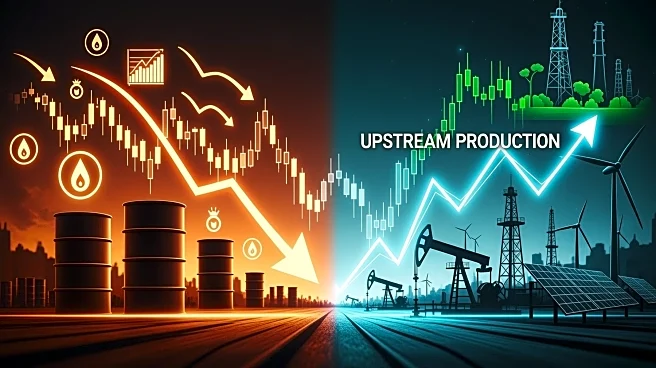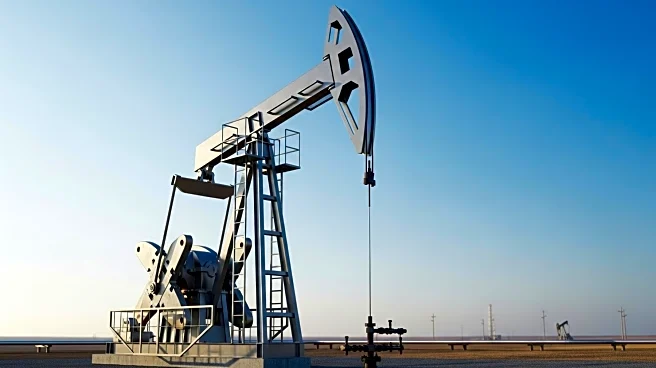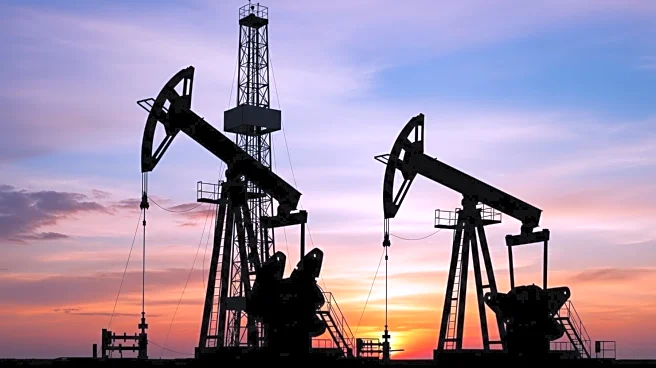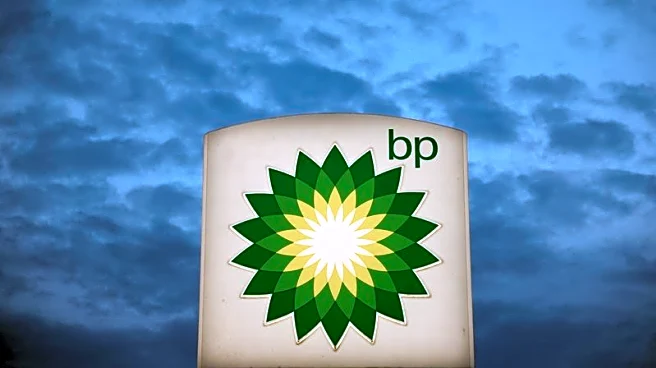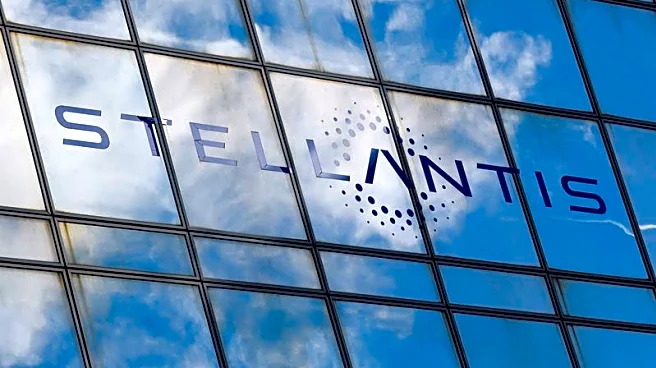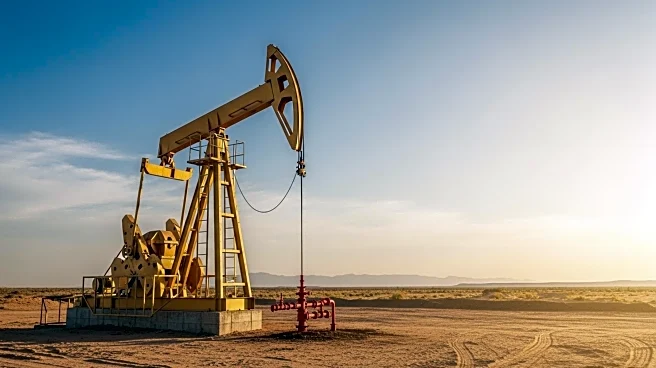What's Happening?
BP Plc has reported weaker oil trading results while experiencing increased production for the second consecutive quarter. The company's third-quarter trading update revealed higher output, including gas production growth from its U.S. shale arm BPX Energy.
Despite weak oil trading, gas trading was average, and BP's shares fell in early London trading. The company is under pressure to reverse years of lagging results by unwinding failed green investments and boosting oil and gas production.
Why It's Important?
BP's mixed performance highlights the challenges faced by energy companies in balancing traditional oil and gas operations with green energy initiatives. The company's strategic pivot towards increasing oil and gas production comes amid an oil market headed for oversupply, impacting profitability. BP's efforts to cut costs and sell assets are crucial for improving financial performance and achieving its debt reduction targets. The company's stock performance, which outpaced peers, indicates investor confidence in its strategic direction.
What's Next?
BP plans to expedite cost-cutting measures and asset sales, aiming for $20 billion in divestments by 2027. The company is targeting a net debt range of $14 billion to $18 billion by the end of 2027. BP's new chairman has emphasized the need to improve operational efficiency and financial results, which could lead to further strategic adjustments and investments in high-return projects.
Beyond the Headlines
BP's struggles underscore the complexities of transitioning to low-carbon energy sources while maintaining profitability in traditional sectors. The company's experience may serve as a cautionary tale for other energy firms navigating similar transitions, highlighting the importance of strategic planning and market adaptability.
